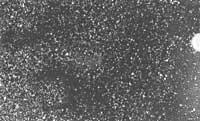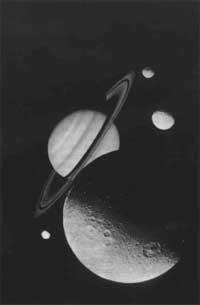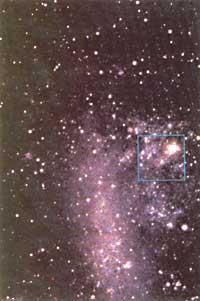Tycho Brahe
1991/03/01 Azkune Mendia, Iñaki - Elhuyar Fundazioa Iturria: Elhuyar aldizkaria
Danish astronomer born in Knudstrup (present-day Scania, part of southern Sweden and before Denmark) on 14 December 1546. He had a twin brother, but he died again.
Between 1559 and 1562, after sending his rich uncle without children, he studied law and philosophy at the University of Copenhagen and then studied at the University of Leipzig in season 1562-1565. In his free hours he studied astronomy on behalf of his uncle.
The truth is that Tycho Brahe was born with the tendency to astronomy in 1560 when he saw the solar eclipse. In 1563, looking at the approach of Saturn and Jupiter, he observed that there was a monthly difference with respect to what was foreseen in the tables of Alfonso X the Wise. Therefore, he bought new tools to be able to carry out his observations and began the construction of new tables.

In 1572, on November 11, he discovered a new noble star in the constellation of Cassiopea. When Hiparco discovers that in his day a new star was born, he formed the first important star map. In 1054 another novel appeared, which was only seen by Chinese and Japanese astronomers. These rookies are not new stars, they are burst stars. But before the explosion they could not be seen at first sight because they had too little light and they seemed that until the telescope appeared they were really new stars.
It became brighter than Venus described by Tycho Brah in his book De Nova Stella (On the New Star). For a year and a half, this new star had three main effects. In fact, he established the name of novel, made famous Brahe and eliminated Aristotelian theory. According to Aristotle, the sky remained fixed in its perfection without changing anything.
King Frederick II of Denmark decided to support the young astronomer and paid the expenses of the realization of the observatory of the island of Hven (now called Ven) between Sweden and Denmark. Tycho Brah built elegant buildings and filled them with the finest instruments at the time, including a 20-and-a-half celestial sphere. The expenses were enormous, but they were visited by savers from all over Europe.
In 1577 a great comet appeared in heaven which Brah studied in detail. Aristotle's theory of celestial perfection, measured by Paralajes, showing that he was farther than the Moon, dreamed to the bottom. In addition, analyzing the orbit of the comet, he indicated that his trajectory was circular and elliptical. It was then a brave idea, since if the orbit was elliptical, it was to cross the spheres in which the planets were (then they believed it).
Therefore, one option was that those spheres were not in heaven, but that was contrary to Brahe's natural tendency. Tycho coincided with Ptolemy's ideas and had Earth as the center of the universe. He was the last to accept Copernic's theory in prestigious astronomers. But at the same time, apart from Hiparco, it has been the best to study at the naked eye of the stars. He also noted the location of 777 fixed stars.
In the book he published about Kometa, however, he wanted to bring to light another theory. According to this theory, all planets (except Earth) would revolve around the Sun and the Sun (with all their planets) around the Earth.
As mentioned above, Tycho was very accurate to analyze the sky at first sight. If Ptolemy, for example, made observations with ten degree errors, Tycho reduced those errors to two degrees. Analyzing the movement of the planets, especially that of Mars, he published better tables than those that existed until then on the movement of the Sun. It calculated the duration of the year for less than a second. As a result, in 1582, under the orders of Pope Gregory XII, the calendar was modified and adapted.
Tycho Brahe was nothing sweet. At the age of nineteen, his nose was cut in a duel. That's why he always used a metal addition.
King Frederick II, for his patience, forgave him many persecutions. In 1588 he died and his successor Kristian IV was bored. Unable to withstand that brand-new, despilfarrador astronomer, he denied the grant.
In 1597 Tycho travelled to Germany responding to the invitation of Emperor Rudolf II. He settled in Prague and as his assistant took Johann Kepler, a young German.
Tycho informed Kleper of his research and put him to form tables of planetary movements. Kepler worked based on Tycho's scheme on the universe, but had to change his master's theories.
Tycho Brahe died in Prague on October 24, 1601.

Gai honi buruzko eduki gehiago
Elhuyarrek garatutako teknologia





